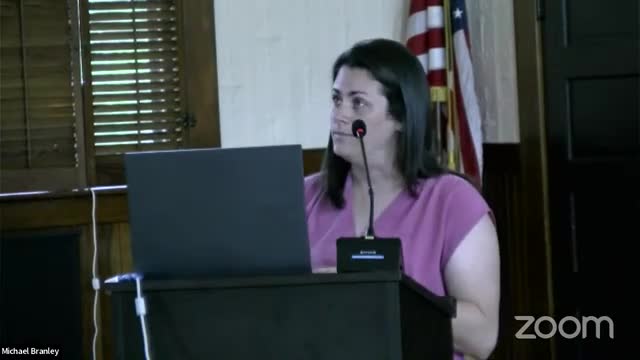Lakes face tipping point as climate change fuels algae blooms
July 21, 2024 | West Swanzey, Cheshire County, New Hampshire

This article was created by AI summarizing key points discussed. AI makes mistakes, so for full details and context, please refer to the video of the full meeting. Please report any errors so we can fix them. Report an error »

During a recent government meeting, officials discussed alarming trends affecting water quality in Swansea Lake, highlighting the impact of low oxygen levels and nutrient pollution. Experts noted that low oxygen can release phosphorus from sediments, which in turn fuels excessive algae and plant growth. Swansea Lake has seen a notable increase in aquatic plant growth and filamentous algae, indicating nutrient overload—a trend mirrored across many lakes in the state.
The meeting underscored the rising levels of chloride in the lake, primarily from winter salt applications and water softening systems. Even small amounts of chloride can disrupt sensitive aquatic organisms and degrade food webs, further complicating the lake's ecological balance.
Recent cyanobacteria blooms in Swansea Lake, although not yet consistent, signal a growing concern for water quality. These blooms can pose serious health risks to humans and wildlife, particularly as they thrive on excess phosphorus from various sources, including construction, agriculture, and shoreline erosion.
The aftermath of severe storms and flash floods last summer has exacerbated the situation, introducing nutrient-laden sediment into the lake. Data collected post-storm indicated a significant drop in oxygen levels, raising fears that the lake may be on a new, detrimental water quality trajectory.
Officials emphasized the need for a comprehensive watershed management plan to address these challenges. They warned that current development practices are unsustainable, as lakes are reaching their tipping points and can no longer absorb additional nutrients without severe consequences. The meeting concluded with a call to action for better management practices to protect Swansea Lake and similar ecosystems from further degradation.
The meeting underscored the rising levels of chloride in the lake, primarily from winter salt applications and water softening systems. Even small amounts of chloride can disrupt sensitive aquatic organisms and degrade food webs, further complicating the lake's ecological balance.
Recent cyanobacteria blooms in Swansea Lake, although not yet consistent, signal a growing concern for water quality. These blooms can pose serious health risks to humans and wildlife, particularly as they thrive on excess phosphorus from various sources, including construction, agriculture, and shoreline erosion.
The aftermath of severe storms and flash floods last summer has exacerbated the situation, introducing nutrient-laden sediment into the lake. Data collected post-storm indicated a significant drop in oxygen levels, raising fears that the lake may be on a new, detrimental water quality trajectory.
Officials emphasized the need for a comprehensive watershed management plan to address these challenges. They warned that current development practices are unsustainable, as lakes are reaching their tipping points and can no longer absorb additional nutrients without severe consequences. The meeting concluded with a call to action for better management practices to protect Swansea Lake and similar ecosystems from further degradation.
View full meeting
This article is based on a recent meeting—watch the full video and explore the complete transcript for deeper insights into the discussion.
View full meeting
